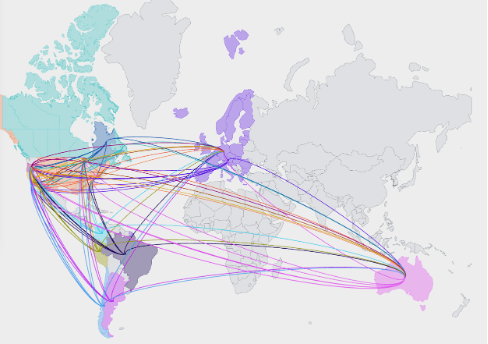
How AI is Transforming Data Privacy from Business Liability to Business Opportunity
The establishment of the European GDPR in 2018, and subsequent privacy legislation in North America and APAC, ushered in a huge improvement in citizens’ data privacy rights. That the privacy rights of the individual today are now honored, monitored, and enforced as a matter of statute across most western and Asian nations is to be celebrated. At the same time, the costs to the business sector have been substantial.
The new data privacy era required years of expensive, complex work for businesses to come into and maintain compliance. Aligning processes for data permissioning, data localization and data subject rights readiness for the new regulatory realities didn’t generate revenue or directly enable growth but were very much business critical. Yet today, with the widening availability of AI-powered privacy solutions, we’re entering a new age where compliance no longer has to be a monumental logistical challenge and cost center, but a real business opportunity.
How AI Strengthens Everyone’s Right to Privacy
The early entrants in privacy management solutions that emerged in the wake of GDPR largely focused on the risk assessment and reporting aspects of the new regulations, with some rules-based functionality to automate basic workflows associated with flagging possible rights violations. Still, homegrown privacy technology and workflows had to be developed in-house to address the orchestration of data subject signals and flag sensitive data . Likewise, creating awareness around or uncovering new data patterns, or responding to regulatory updates and organizational changes through automated processes was beyond the capabilities of early DPR solutions. While these solutions were helpful, most regulated entities still needed to devote significant resources to developing custom code and processes across the organization—again, legal, marketing and security resources all had to be tapped in these efforts– to bring the organization into full compliance.
With AI-powered data privacy, this equation changes fundamentally—all of the most complex and resource-intensive aspects of compliance can now be automated. It has become possible to start thinking about compliance not from a defensive crouch, but as a way to unlock the full business value of freely shared data. Business entities can now become responsible privacy stewards with the documented capacity to control personal data according to the time, terms and conditions of its owner’s choosing. It’s finally possible to envision a world in which societies, governments, businesses and citizens move from rules to tools that respect data dignity and enable all stakeholders to responsibly harvest the gains of a data-driven economy.
Where AI Is Changing DPR Management–Automating Key Processes
It’s highly unlikely that the AI and ML scientists and researchers who’ve rapidly progressed AI adoption in recent years had data privacy rights management on their minds when developing the LLMs that power AI capabilities. But it’s hard to imagine a technology better suited to the particular challenges posed by data privacy regulation compliance. Consider the DPR management processes that benefit:
Consent Management and Preference Tracking
AI helps identify when re-consent may be required due to changes in processing purposes or data usage, ensuring that user permissions remain valid and up to date. For busy teams managing website tags and trackers—a never-ending chore—the process can now be automated end to end, from scanning for new trackers and categorizing them by privacy purpose to flagging those that disappear. At the same time, marketing preferences can be managed alongside privacy signals in a unified portal where visitors control their communication preferences with granular options for channels (SMS, email), frequency (daily, weekly), and type (news, product).
Pattern Recognition and Cross-System Integration and Correlation at Scale
AI excels at identifying complex patterns across vast datasets that would be impossible for humans to detect manually. In privacy contexts, this means AI can recognize personal data even when it's fragmented across multiple systems, stored in unstructured formats, or embedded within seemingly unrelated information. Because AI can trace data lineage, identify dependencies, and ensure complete responses to privacy requests, teams can create an immediate, visual map of personal data locations and major risks.

The lines on this map highlight data residency and transfer: making it easy for privacy teams to understand how data moves across the organization. (Source is the solution demo / tour linked from Ketch’s home page)
Dynamic Learning and Adaptation
Unlike static rule-based systems, AI continuously learns from new data patterns, regulatory updates, and organizational changes. This adaptive capability is such a powerful tool for privacy management because data flows, business processes, and regulatory requirements constantly evolve. AI systems can automatically adjust their detection algorithms and compliance procedures without requiring manual reprogramming. Plus, with its natural language processing capabilities, AI is able to understand context, extract meaning, and identify personal information within the unstructured sources that contain the bulk of private data. This capability is crucial for comprehensive data mapping and subject rights fulfillment, as traditional database searches would miss this information entirely.
End-to-End Automation of Data Subject Rights (DSR) Requests
AI systems can help identify user information that should be modified in a DSR request across the data ecosystem and ensure full compliance and coverage. By automatically scanning connected systems, databases, and third-party platforms, AI can pinpoint where a user’s data resides, determine which records are relevant to the request, and trigger the necessary updates or deletions. This intelligent orchestration reduces the manual burden on privacy teams, minimizes human error, and ensures that no data source is overlooked. As a result, organizations can respond to requests faster, more accurately, and with full traceability across every system that processes personal data.
Privacy Impact Assessment Automation
AI can analyze new data processing activities, system changes, and business processes to automatically flag potential privacy risks and generate preliminary privacy impact assessments. By evaluating factors like data sensitivity, processing purpose, and storage duration, AI systems can help organizations proactively identify when formal privacy assessments are needed and highlight areas requiring additional safeguards.
Turning Data Privacy into a Business Differentiator
With data privacy and permissioning solutions built for the AI era, fast and easy regulatory compliance for legal teams and data freedom for business teams is becoming a reality. Organizations that have struggled to achieve and stay compliant with the expanding constellation of regulations now have an opportunity to realize a return on their investment, and turn data privacy into a business differentiator that strengthens brands and drives more profitable customer relationships.
Tech, startups & the big picture
Subscribe for sharp takes on innovation, markets, and the forces shaping our future.
Let's keep in touch
We're heads down building & growing. Learn what's new and our latest updates.


